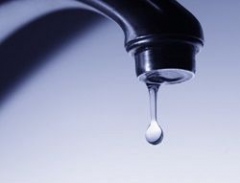Water: Filters for the Home
There is a wide range of water filters available for the home. Before purchasing, make sure you consider the efficacy vesus the cost. A good filter should remove bacteria as well as additives like chlorine and fluoride and compounds and chemicals like pesticides and herbicides. The better models will also remove heavy metals and nitrates. A good system will cost anywhere from $50 to $500. Most filters will last 9 to 12 months before needing new cartridges or service.
CARBON FILTERS
How it works:
Carbon filtration uses pulverized carbon, which is pressed into a block to form a porous maze for water to pass through that captures and removes impurities and contaminants. A good basic filter best used in combination with another filter.
What is filtered out:
Reduces chlorine, organic chemicals, pesticides, and herbicides, bacteria and microbes.
Carbon filters reduce, but do not necessarily remove heavy metals, nitrates, some bacteria and cysts
How long it lasts:
Filters need to be replaced every few months
Installation and Cost:
Easy to install. Reasonably priced.
Faucet model: $25-50
Under counter model: $100 and up
CHARCOAL FILTERS
How it works:
The medium of charcoal filters is derived from coconut husks, which absorb impurities and contaminants as the water passes through.
A good rudimentary filter best used in combination with another filter.
What is filtered out:
Removes most dangerous contaminants, bacteria and microbes like giardia, and cysts like cryptosporidium
How long it lasts:
Filters need to be replaced every few month
Installation and Cost:
Very easy to install under sink or on the counter;
Reasonably priced ($40-$100)
DISTILLER
How it works:
Water is raised to its boiling and condensed, leaving all contaminants behind, including sediments, toxic metals, nitrates, and microbes.
What is filtered out:
Everything. However, the water tastes very flat.
How long it lasts:
Many years, depending on the manufacturer.
Installation & Cost:
Units available for purchase sit on counter cost between $200-$1200 depending on size. They require a lot of energy, so electrical cost should be considered.
REVERSE OSMOSIS (R.O.)
How it works:
Pressurized water is forced through the superfine pores of a membrane that measure ten-millionths of an inch (itty-bitty!). R.O. not only filters the impurities but also actually rejects contaminants and repels them from the surface of the filter membrane. Water is then sent to a holding tank to be used. R.O. is very effective and one of the best systems available.
What is filtered out:
All bacteria, microorganisms, heavy metals, radium, radon, and uranium. Even single molecules of organic compounds are removed with R.O..
How long it lasts:
An R.O. system and holding tank will last more than a dozen years. Membranes must be changed every few months for best results.
Installation & Cost:
Must be professionally installed and serviced.
Counter model: $150-250
Under sink model: $500-1,500
ULTRA-VIOLET LIGHT TREATMENT (UV)
How it works:
Ultra-violet (UV) light is used to disinfect water and kill bacteria.
UV is usually used in combination with other filters as it disinfects water but does not remove contaminants.
What is filtered out:
Bacteria
How long it lasts:
UV treatment systems last for years, but require regular maintenance and cleaning.
Installation and cost:
Reasonably easy to install, but should be professionally maintained, which can be expensive.
Federal Law passed the “Right to Know Amendment” (Oct. 1, 1999), which requires all water utilities to provide each and every customer with a detailed report of what is in your water. If you do ask for it, it will likely read that the contaminants present “do not necessarily pose a health risk”. However! The Surgeon General of the National Cancer Institute counters that, “No level of chemical carcinogens should be considered toxicologically insignificant to humans”.
EPA Safe Drinking Water Hotline: (800)426-4791
Tagged: good to know smart (green) living


